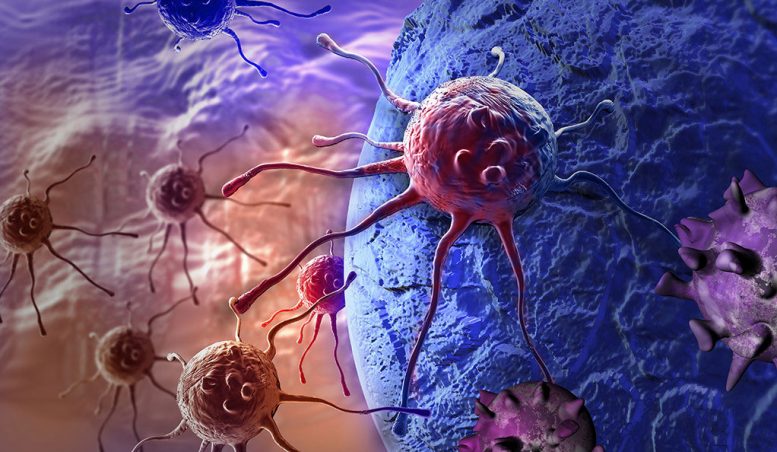
A new study sheds light on the mysterious connection between non-coding mutations and cancer risk, pointing to potential drug targets to lower the risk for people born with particular genetic mutations.
A new mechanism links mutations in areas devoid of genes to cancer.
For many years, the human genome was seen as a book of life, with passages of remarkable eloquence and economy of expression intermingled with long stretches of nonsense. The readable areas carried the instructions for producing cell proteins; the other regions, which accounted for around 90% of the overall genome, were disregarded as “junk DNA,” with no discernible use.
Scientists have learned the contrary from research. Many non-coding regions have been demonstrated to serve an important function in regulating gene activity, increasing or lowering it as needed. This has created new challenges for cancer researchers: if mutations in coding areas lead cells to produce defective proteins, what effect do mutations in non-coding regions have? How can a mutation in the genome’s hinterlands — places empty of genes — lead to cancer?
Given that non-coding areas are involved in gene regulation, researchers have naturally theorized that mutations in these zones disrupt gene function in ways that promote cancer. However, study after study has demonstrated that this is not the case, leaving the biological effect of non-coding mutations a mystery.
Thinking locally
Dana-Farber researchers offered an explanation in a recent paper published in the journal Nature Genetics. They achieved it by doing the scientific equivalent of thinking locally: they limited their research to the specific DNA sequences where non-coding mutations occur. They discovered that in the vast majority of instances studied, such mutations have an epigenetic impact, changing how tightly the DNA at particular places is wrapped. This, in turn, influences how accessible particular regions are to binding to other portions of DNA or certain proteins, all of which may alter the activity of cancer-related genes.
The research demonstrates, for the first time, a widespread biological mechanism via which non-coding mutations might influence cancer risk. It also paves the possibility for treatments that, by blocking that system, potentially lessen the chance of certain cancers forming in at-risk individuals.
“Studies have identified an enormous number of mutations across the genome that are potentially involved in cancer,” says Havard Medical School assistant professor Alexander Gusev, Ph.D., of Dana-Farber, the Eli and Edythe L. Broad Institute and Brigham and Women’s Hospital, who co-authored the paper with Dana-Farber’s Dennis Grishin, Ph.D. “The challenge has been understanding the biology by which these variations increase cancer risk. Our study has uncovered an important part of that biology.”
Does mutation change expression?
To identify inherited, or germline, mutations that increase a person’s risk of developing cancer, investigators conduct what are known as genome-wide association studies, or GWASs. In these, researchers collect blood samples from tens or hundreds of thousands of people and scan their genomes for mutations or other variations that are more common in people with cancer than in those without the disease.
Such tests have yielded thousands of such mutations, but only a small percentage of them are in coding portions of the genome that are relatively easy to link to cancer. Breast cancer is one example. “More than 300 mutations have been identified that are associated with an increased risk of the disease,” Gusev states. “Less than 10% of them are actually within genes. The rest are in ‘desert’ regions, and it hasn’t been clear how they influence disease risk.”
To try to make that connection, researchers gather two sets of data: one, GWAS data showing mutations in a specific type of cancer; and two, data on another genomic feature of that cancer type — such as an abnormally high or low level of activity in certain genes. By looking for areas of overlap between these data sets, in a process called colocalization, researchers can determine whether the mutations correspond with a rise or fall in the activity of those genes. If such a relationship exists, it would help explain how non-coding mutations can lead to cancer.
Despite massive investment in this type of research, however, colocalization studies have turned up very few such correspondences. “The vast number of mutations identified by GWASs have been found to have no colocalizing gene at all,” Gusev remarks. “For the most part, non-coding mutations associated with cancer risk don’t overlap with the changes in gene expression [activity] documented in public data sets.”
Looking closer to home
With that route looking increasingly unenlightening, Gusev and Grishin tried another, more fundamental approach. Instead of beginning with the premise that non-coding mutations might influence gene expression, they asked how they alter their home environment – whether they affect the coiling of DNA in their immediate vicinity.
“We hypothesized that if you look at the effect of these mutations on local epigenetics — specifically, whether they caused nearby DNA to be wound more tightly or loosely — we’d be able to detect changes that wouldn’t be evident in expression-based studies,” Gusev relates.
Their reasoning: “If a mutation has an effect on disease, that effect will probably be too subtle to capture at the level of gene expression but may not be too subtle to capture at the level of local epigenetics — what is happening right around the mutation,” Gusev says.
It’s as if previous studies sought to understand how a brush fire in California could affect the weather in Colorado, whereas Gusev and Grishin wanted to see its effect on the hillside where it began.
To do that, they performed a different type of overlay study. They took GWAS data on cancer-related mutations and data on epigenetic changes in seven common types of cancer and examined whether — and where — they intersected.
The results came in stark contrast to those from colocalization studies. “We found that whereas most non-coding mutations don’t have an effect on gene expression, most of them do have an impact on local epigenetic regulation,” Gusev states. “We now have a basic biological explanation of how the vast majority of cancer-risk mutations are potentially linked to cancer, whereas previously no such mechanism was known.”
Using this approach, the researchers created a database of mutations that can now be linked to cancer risk by a known biological mechanism. The database can serve as a starting point for research into drugs that, by targeting that mechanism, can lower an individual’s risk of developing certain cancers.
“If we know, for example, that a certain transcription factor [a protein involved in switching genes on and off] binds to one of these cancer-associated mutations, we may be able to develop drugs targeting that factor, potentially reducing the likelihood that people born with that mutation, will contract cancer,” Gusev says.
Reference: “Allelic imbalance of chromatin accessibility in cancer identifies candidate causal risk variants and their mechanisms” by Dennis Grishin, and Alexander Gusev, 13 June 2022, Nature Genetics.
DOI: 10.1038/s41588-022-01075-2

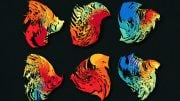

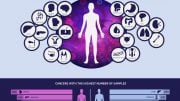
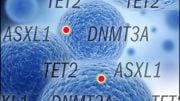
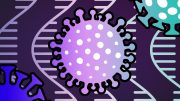
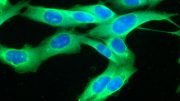
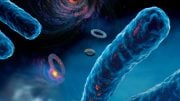
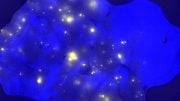
Be the first to comment on "Harvard Researchers Have Solved a Perplexing Cancer Mystery"